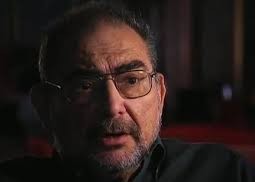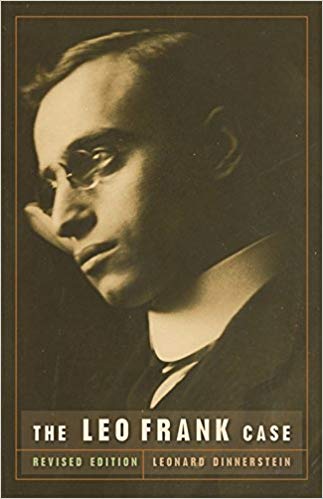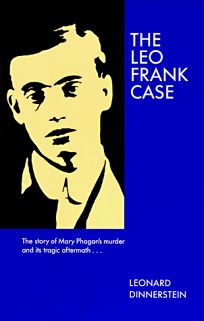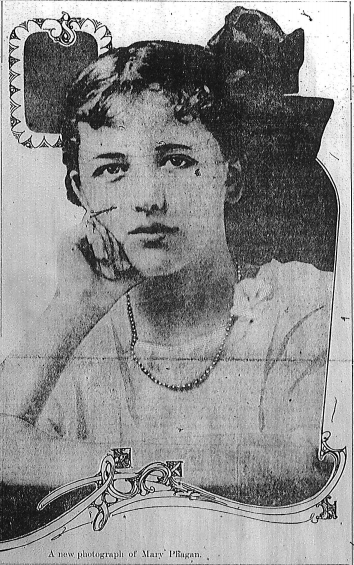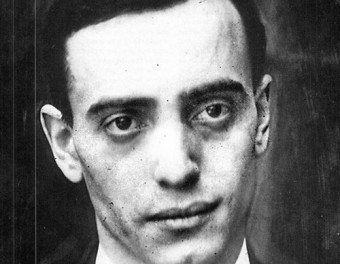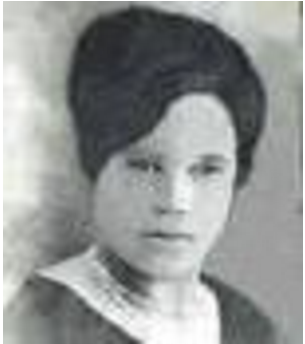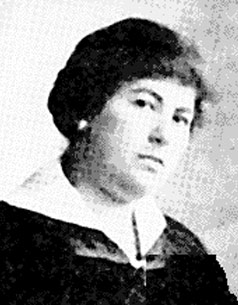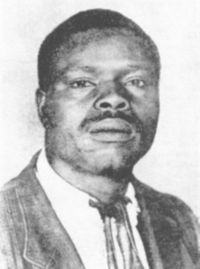by Reed Miller
RETIRED ARIZONA Professor Emeritus of Judaic Studies, Leonard Dinnerstein, I am sorry to say, has joined the eternally dark pantheon of history-falsifiers. Dinnerstein is best known for being a scholar of the Leo Frank case. He doesn’t deserve to be so known.
Dinnerstein’s book The Leo Frank Case is shameless falsification of history. It is an embarrassment to American scholarship. Dinnerstein verifiably omitted some 99% of the facts contained in the 1,800 page official Leo M. Frank Georgia Legal Record that encompasses the 1913 murder trial of Frank and his State Supreme Court Appeals from 1913 through 1914. These legal records fortunately survived in their entirety into the 21st century — and they show us clearly how Dinnerstein cherry-picked his sources to give a bizarrely skewed view of the case.
Dinnerstein has, to speak frankly (no pun intended), a racist agenda. He seems to want to perpetuate Jewish-gentile conflict by imputing anti-Semitism to 1913 Atlantans, when nothing could be further from the truth. And, just like the Frank legal team a century ago, he tries to lay the blame for Mary Phagan’s murder on an innocent Black man. Students of law and history should study the primary sources of the Leo Frank case — and then cross-reference them with any and every edition (from 1968 to today, there are many) of Dinnerstein’s book. They’ll soon see the real Leonard Dinnerstein at work. It’s not a pretty sight. Doubtless the great Professor Emeritus didn’t anticipate the easy availability of these primary source documents since the rise of the Internet, or he would have been more careful.
The main purpose of The Leo Frank Case is to smear the people of the South as violent Jew-haters (actually, the South was the most solidly pro-Jewish section of the United States then, and is now); defame one of the greatest statesmen of the Southern progressive era, Hugh Dorsey, as an unscrupulous political climber; perpetuate unfounded racist allegations against African-Americans; and shamelessly rehabilitate the image of Atlanta’s B’nai B’rith President, Leo M. Frank — the serial rapist-pedophile (see: GA Supreme Court Records, 1913, 1914), strangler, and convicted child killer. Quite an ambitious combination that might well daunt any author — I have to grant Professor D. a six-pointed gold star for audacious chutzpah. Frank was convicted in 1913 for bludgeoning, raping, garroting, and ordering the necro-mutilation of 13-year-old Mary Anne Phagan who worked in the sweatshop he operated in Atlanta, the National Pencil Company.
Essentially Dinnerstein’s life’s work has been promoting the thesis that the white Southerners of 1913 were so filled with anti-Jewish animus that they knowingly and willingly set free a guilty African-American man who had pounded his fists into the face of a little 13-year-old white girl, just before raping, strangling, and mutilating her — just so they could execute an innocent Jew. The thesis is preposterous and indefensible, yet Dinnerstein has single-mindedly stuck to it, in direct conflict with mountains of evidence, for over 50 years.
He suggests the reason Southern whites knowingly let the guilty black rapist and strangler go free was so they could instead indiscriminately, but intentionally, frame an innocent Jewish man for the crime — for no other reason than that he was Jewish. And wait, there’s more — topping it all off, Dinnerstein expects us to believe that the “unscrupulous” Solicitor General Hugh Dorsey and the Atlanta police and detectives, all worked together coaching James “Jim” Conley until he was as perfect as a trained parrot to trick the trial jury and unjustly convict Leo Frank.
Dinnerstein’s 200-plus-page opus reveals his obsession with purported anti-Jewish intrigues and plots in the Old South, most of which can be found nowhere else in the historical or any other literature. Search for them as you will, but the references nearly all lead back to Dinnerstein and then can be traced no further. For page after page he renders wrongful indictments against the people of Georgia, the South, and every Southerner — even though the consensus amongst historians and scholars of all ethnic backgrounds is that anti-Semitism was virtually non-existent in the South and especially so during the progressive era. Jews prospered there mightily.
There is certainly plenty of racism, bigotry, prejudice, and injustice to be found in our multicultural world, but there is really nothing more spineless and cowardly than to fabricate evidence of it and then falsely accuse someone, as the exalted Professor Emeritus has done.
The organized Jewish community regularly gave kudos and accolades to Dinnerstein for each of the numerous nearly-identical editions of his book, and his largely repetitive related volumes. They described Dinnerstein as the “definitive author” on the Leo Frank case (though in the last decade, the more circumspect but still propagandistic Steve Oney seems to have usurped that title).
One thing Leonard Dinnerstein doesn’t tell the reader about the Frank-Phagan case is Frank’s astonishing admission, made on August 18, 1913, during his unsworn trial statement to the judge and jury, that he had walked directly to the exact spot, literally within inches, where Mary Phagan was killed — and at the exact time when she was murdered. That revelation was so incriminating that it amounted almost to a murder confession, and yet Dinnerstein conveniently leaves this stupefying incident completely out of his account of the case.
Dinnerstein also presents the hoax — repeated hundreds of times now by Abraham Foxman of the ADL and by dozens of media and academic hacks — that mobs of angry people were screaming “racist anti-Semitic death threats” at the jury through the courtroom windows during Leo Frank’s trial. These alleged mobs were claimed to have screamed at the jurors “Hang the Jew or we’ll hang you!” and other threats. (See his “Leo Frank and the American Jewish Community” in the American Jewish Archive Journal, 1968, volume 20, number 2.)
But a diligent search will show you — absolutely — that none of the local Atlanta newspapers, some of whom took a pro-Frank stance — and who had teams of reporters inside and outside the courtroom — ever mention any such incident, which surely would have been instant grounds for a mistrial. It was also never mentioned during the trial by Frank’s own high-powered and expensive legal team, who surely would have jumped at the chance to gain a new trial in a new venue for their well-connected client.
The Jewish Anti-Defamation League (ADL) still uses Dinnerstein’s “hang the Jew” hoax as a major part of its outreach on the Leo Frank case.
Let me back up for a few moments and give new readers the basic facts of the case — one of the most important and fascinating criminal cases of the last century.
Just minutes past noon on Confederate Memorial Day, Saturday, April 26, 1913, Mary Phagan entered the National Pencil Company building to collect her pay envelope containg just $1.20.
(She normally earned $4.05 a week, but her pay was significantly reduced that week because of a shortage of materials, causing her to be temporarily laid off for a few days. Not many rights for workers in those days! There was a shortage of the brass sheet metal used to make tubular eraser holders attached at the ends of the pencils. Mary Phagan worked at the rear of the second floor in what was called the “metal room.” Her work station was next to the bathroom entryway there. Mary was a “tipper,” meaning that her job was inserting rubber erasers into the brass tubes at the ends of the pencils. She worked and sweated there for a little over seven cents an hour during each typical 55-hour, six-day work week. She started working there in the spring of 1912, when she was only 12 years old.)
After picking up her pay on that fateful day from Leo Frank in his office at the other end of the second floor from her work station, she was never seen alive again.
Fast forward fifteen hours. It is long after midnight, and the only person in the pencil factory is the night watchman, a middle-aged black man named Newt Lee. Only moments after using the racially segregated “negro toilet” in the basement, Lee spotted the dead body of Mary Phagan not far off, near the furnace. It was 3:15 am, Sunday, April 27, 1913. Newt quickly went up to Leo Frank’s second floor office, where the only working phone in the building was located. Lee reported the incident to Sergeant W.F. Anderson, night shift call officer for the Atlanta police. Lee also made repeated attempts — for eight minutes — to contact Leo Frank by phone, but no one answered at the Selig residence, where Frank lived with his wife and in-laws. The police arrived at the National Pencil Company factory 15 minutes later.
With Newt Lee leading the way, together they descended into the basement and then walked more than 100 feet to where Mary lay. She was in a filthy state, lying on her side, her face encrusted with dirt. Her girlish body gave the appearance of having been dragged. Seeing Mary Phagan’s apparently reverently crossed arms after she had suffered such an obviously violent death was a weirdly out-of-place sight those men would be unlikely to forget for the rest of their lives. A piece of ripped lace around her neck was not enough to stop the officers from noticing that directly underneath it was an eighth-inch cord made into a makeshift noose. The cord was taut around her neck, sunk deep into her flesh. Mary’s dress was ripped from hem to crotch, and her bloodied underwear were still attached to her body, torn open across the crotch up to the right seam. Nearby, two peculiar handwritten notes were discovered on the floor. They bore an obviously contrived message.
The notes, later dubbed the death notes or murder notes, described in Southern black dialect (even though they purported to be written by Mary herself)) a “negro” killer — the tall, dark, and slim “night witch,” (evidently meaning “night watch”), a close description of Newt Lee, who was the tall, slim, and dark-complected nightwatchman who found Mary’s body. Lee had worked for the National Pencil Company for only three weeks. The death notes essentially accused him of raping Mary Phagan.
Lee was an aging, nearly bald, and married African-American security guard, with years of graveyard shift work experience. He had long been trusted to be alone, on the job at night, guarding valuable property. He had no criminal record. But if the incriminating notes stood up before a jury, Newt Lee would certainly hang by the neck until dead, as prescribed by law — and doubtlessly that was exactly what the note’s author intended.
These notes were very strange — constructed as if they were written by little Mary herself, and addressed to her mother Francis, they claimed to have been written while Mary was in the midst of being sexually molested by Newt Lee. In the Old South, black men who even whistled at or “wild talked” to — or even jostled — White women, stood a very dangerous risk of bodily harm, if not death by lynching. Out of nearly 3,500 lynchings in American history, the vast majority of victims were black men. (By the way, a few years later, it was Hugh Dorsey, the man who prosecuted Frank and was vilified by Dinnerstein, who used his political influence and clout to fight the barbaric practice of lynching, even when it was politically unpopular to do so. Dorsey’s efforts helped to put an end to lynching in America.)
In 1913, Leo Frank was no ambitious upstart. He was an established and prominent leader of Atlanta’s Jewish community. He was superintendent and part-owner of the pencil company, a position he had held for five years. And he was the president of the Atlanta B’nai B’rith.
After trying all night long, the police finally got Leo Frank on the telephone at dawn and informed him briefly that they needed to speak with him face to face.
On Sunday morning, Leo Frank was escorted by police to P.J. Bloomfield’s mortuary to identify the victim. Frank claimed he wasn’t sure. He said he would have to check his accounting and payroll ledgers to verify that this had been the girl he’d paid at noon the day before. The officers drove Leo Frank to the factory and together they all went up to his second floor window-front office. He reviewed his accounting books. The police specifically wanted Leo Frank to try to pinpoint at what time Mary Phagan appeared in his office to collect her pay. After reviewing his payroll logbook, Leo Frank told the police Mary Phagan had arrived in his office on Saturday, April 26, 1913, at sometime near 12:03 pm.
Leo Frank then took out Newt Lee’s time card from the clock and examined it, telling the police it was punched perfectly every half hour between 6:00 pm on April 26, 1913, to 3:00 am on April 27, 1913. The information showed that Newt Lee had performed in accordance with what was expected of him during his security shift and would not have had time to leave nor to clean himself up after any bloody confrontation. Leo Frank was not under suspicion at the time and was allowed to go home.
The next day, Monday, Leo Frank was called down to the police station where he made a deposition. Though he wasn’t under any suspicion at the time, Leo Frank nevertheless had two of Georgia’s most powerful lawyers representing him there: Herbert Haas and Luther Z. Rosser.
Leo Frank then said that Mary Phagan had come into his second floor office on April 26, 1913, between “12:05 pm and 12:10 pm, maybe 12:07 pm.” Frank put the time as 12:07 pm — when the day before he had said 12:03. He would go on to change Mary’s arrival time on at least three separate occasions, which raised more than a few eyebrows. (He also made the eyebrow-raising claim that he didn’t know Mary by name, though he had paid her wages every week, and walked by her work station many times every day, for an entire year.)
On Monday, Frank also changed another important part of his story: Now he told the police that he had “made a mistake” concerning Newt Lee’s time card. In contradiction to his statement the day before, when he had reported in front of the officers that Lee’s time card was punched perfectly every half hour, he now said that after closer inspection of the card, he had discovered that the nightwatchman had actually missed four of his half-hour punches, leaving open four hours of unaccounted-for time. (The police had made a serious error in leaving the card in Frank’s possession overnight instead of impounding it as evidence.) This “new information,” which was believed by some investigators at the time, caused even greater suspicion to be directed at Lee, who was at the time already the prime suspect. If circumstances had been just slightly different, this might have ended up being the coup de grace — the death blow — for Newt Lee. Instead, it turned out — the very next day — to be a blunder that forever turned the tide against Frank.
While he was being interrogated, Frank had a flash of brilliance. He stood up and volunteered — demanded, actually — that he disrobe for the police. They inspected his body, and clothes, and saw no signs of blood, as Frank knew they wouldn’t — and it was then a certainty, as Frank also knew, that they would then be impelled to visit his home for the purpose of inspecting his laundry. And, as he doubtlessly also reasoned, they would then feel obligated to do the same at Newt Lee’s residence. Leo Frank had adroitly plucked himself out of the spider’s web, and got the spiders to take him home where they inspected his hamper and found nothing amiss.
Ah, that most delicate feint and subtle engram of a hint — for the police to check the hamper at the nightwatchman’s shack at 68 Henderson Street. And on Tuesday morning, April 29, 1913, at 9:00 am sharp, armed with a skeleton key, they did exactly that. And what do you know — there they found a shirt, apparently Newt Lee’s shirt — spattered, covered, soaked in blood!
It would have worked, too, had the police been just a little less skeptical and careful. An innocent man would have been executed from a crime with which he had nothing to do. But skeptical and careful they were, and it was shown that the shirt had not been spattered by blood in any conflict, but had been purposely immersed in blood. The “bloody shirt” was a fake — and it would not be the last piece of planted fake evidence in this case. It has occurred to you, I’m sure — just as it did to the Atlanta police — that only a guilty man would plan and hire out such fakery, and there was only one man in Atlanta with a motive to do that.
Meanwhile, more and more real evidence was piling up. On Monday morning, April 28, pencil factory employee Robert Paul Barrett found bloody hair tangled around the iron handle of his bench lathe (see the Coroner’s Inquest, May, 1913), which was located against the south wall of the metal room. Moments later, one of the child laborers there, Magnolia Kennedy, discovered a five-inch-wide fan-shaped blood spatter on the floor near the metal room bathroom door. She immediately told Barrett. Someone had smeared Haskoline, a white powder lubricant, over the stain, but it was imperfectly concealed.
These metal room forensic discoveries were critical. They strongly suggested that Mary Phagan had not been killed in the basement where she was dumped, but instead in the metal room. The metal room was on the second floor, the same floor where she worked, where her metal supplies would have been, and where everyone acknowledged she had met Frank to get her pay just a short time before her death. Another fact supporting this conclusion was that the drag marks on Mary’s face showed no signs of bleeding or healing despite the fact that she had obviously been bodily dragged, and drag marks were found in the basement leading from the elevator shaft to where she was found. Therefore she was already dead when she was dragged across the basement floor. The police measured 140 feet from the drag marks’ beginning at the basement’s elevator shaft to their end where she was found.
After Leo Frank was arrested on Tuesday, he swore to the police that he had never left his office on the day of the murder from noon to 12:45 pm, the crucial time in which it was ultimately determined that Mary Phagan lost her life. He said the same thing at the Coroner’s Inquest. He continued to say the same thing — that he’d never left his office during that time — for three and a half months.
A breakthrough in the Mary Phagan murder investigation occurred on May 3, 1913: Atlanta police accidentally bumped into 14-year-old Monteen Stover at the National Pencil Company factory. Stover was a former employee of the pencil company. She was present with her stepmother, who was terrified and livid because of some very interesting circumstances that had occurred exactly one week earlier. Monteen had failed to retrieve her pay envelope when she arrived to pick it up from Leo Frank the week before, on April 26, 1913 — the day of the murder. When the police asked Stover what time she came to the factory, she said she arrived in Frank’s office at 12:05 pm and found his office empty, so she waited for five minutes and finally gave up and left at 12:10 pm, because she thought no one was there. When asked how she knew what time it was, Stover reminded the police about the prominent wall clock in Leo Frank’s office.
On Sunday, May 4, 1913, armed with this new information from Monteen Stover, police detective John Black and Pinkerton detective Harry Scott approached Leo Frank in his jail cell to test his murder alibi. They asked him if he had been in his office every minute from noon to 12:45 pm on April 26. Leo Frank responded affirmatively, saying “yes.” The question was restated — “Were you in your office every minute between twelve noon and 12:45 pm on April 26, 1913?” Leo Frank again said “yes.”
Here was a significant contradiction. Someone was not telling the truth. Someone was lying about Frank’s whereabouts at the very time that Mary Phagan was being raped and killed. And it certainly seemed unlikely that Monteen Stover was the one who was lying, or could have any conceivable motive to lie.
This new information suggested that Leo Frank might have gone with Mary Phagan back to the metal room before 12:05 pm. The mystery was narrowing. But then Leo Frank tried to widen it again the next day by changing his account of the time of Mary Phagan’s arrival for the third time.
On Monday, May 5, 1913, Leo Frank told the Coroner and his six-man jury that Mary Phagan had come to his office between 12:10 pm and 12:15 pm on the murder day. This contradicted his deposition to police on Monday, April 28, 1913, when he had stated that Mary came into his office between 12:05 pm and 12:10 pm, “maybe 12:07 pm” — and even further contradicting his Sunday, April 27, 1913, statement that Mary Phagan entered his office at 12:03 pm.
The Coroner and his jury unanimously voted to bind Leo Frank over for the murder of Mary Phagan and to put the case into the hands of the grand jury.
After a two-week investigation into the Phagan murder, Leo Frank was unanimously indicted by 21 grand jurymen — who included in their number several Jewish members, putting into serious doubt Dinnerstein’s claim that Leo Frank was indicted and convicted because of anti-Semitism. For insight into what was stated at the Leo Frank grand jury hearings, the accounts in the three major competing Atlanta newspapers at the time, which are being transcribed and published at the Leo Frank Case Research Library.
Leo Frank’s 29-day trial began on July 28, 1913 and ended on August 25, 1913.
While on the stand at his trial, Leo Frank changed his story again. On August 18, 1913, at 2:46 pm, he attempted to explain why Monteen Stover had found his office empty on the murder day between 12:05 pm and 12:10 pm. Frank told the judge and jury that the reason Monteen had found his office empty, and why he had denied he’d ever left it, was because he might have “unconsciously” gone to the bathroom in the metal room toilet during the period when Monteen Stover was looking for him. The metal room bathroom was also — and this is what makes his revelation so startling — within inches of where Mary Phagan was killed and this putative bathroom visit also occurred at the very time that Mary was being sexually assaulted and murdered.
Here are Leo Frank’s exact words on the witness stand at his trial:
Now, gentlemen, to the best of my recollection from the time the whistle blew for twelve o’clock until after a quarter to one when I went up stairs and spoke to Arthur White and Harry Denham, to the best of my recollection, I did not stir out of my office; but it is possible that in order to answer a call of nature or to urinate I may have gone to the toilet. Those are things that a man does unconsciously and can not tell how many times nor when he does it (Leo Frank Trial Brief of Evidence, 1913, p. 186).
This astonishing admission was most significant, not only because the only set of bathrooms that existed on the second floor were located in the metal room (Defendant’s Exhibit 61, State’s Exhibit A), but also because the area next to the toilet in the metal room was the place where Jim Conley testified he had found Mary Phagan dead after Leo Frank had privately confessed to Conley that he had committed a violent assault on her because she had refused to have sex with him.
There was no bathroom on the first floor, and none of the management or white employees would likely have gone all the way down into the dark, gloomy basement and walked all the way to the rear in the pitch-black darkness for the purpose of illicitly using the racially segregated “negro toilet” there. No, if Leo Frank made an unconscious trip to answer a “call of nature,” the metal room bathroom, the one he always used, would have been his only possible destination.
Leo Frank would sustain this dumbfounding admission on March 9, 1914, in an authorized jailhouse interview published in the Atlanta Constitution.
Leonard Dinnerstein completely ignores this astounding piece of evidence from the mouth of Leo Frank himself.
Another thing Professor Emeritus Dinnerstein does not provide you with is the whole story of what the cook in the Frank-Selig household, Minola McKnight, and her husband Albert, revealed to the police on June 3, 1913. It amounted to yet another confession by Leo Frank.
The facts attested to are these: At 10:30 pm on the day of the murder, the drunk Leo Frank confessed to his wife, Lucille S. Frank, what he had done at the factory that afternoon (Leo Frank Trial Brief of Evidence, State’s Exhibit J, June 3, 1913). Frank told his wife he “didn’t know why” he “would murder” — and then asked for his pistol to shoot himself. Frank also made his wife Lucille sleep on the floor.
This likely explains why Lucille did not visit Leo Frank in jail for two weeks after his arrest on Tuesday, April 29, 1913, which became quite a scandal at the time. It also explains why grave site number one, reserved for Lucille S. Frank (location ID: 1-E-41-1035-01) and located to the immediate left of Leo Frank’s grave at Brooklyn’s Mount Carmel Cemetery, is still empty. Lucille Frank died in 1957 and chose not to be buried there. She requested cremation in her magistrate-notarized 1954 will. According to Lucille’s grandnephew, she asked that her ashes be spread in an Atlanta park, but a local ordinance prevented it, so she was instead buried in an unmarked grave between the tombstones of her beloved parents in Atlanta’s Oakland Cemetery — hundreds of miles away from Leo Frank’s grave (Oney, 2003, 2004).
Leonard Dinnerstein also perpetuates sensationalistic hack writer and self-promoter Pierre van Paassen’s ridiculous 1964 ( ! ) “bite mark” hoax. Van Paassen, whose writing included such gems as claiming to have seen supernatural “ghost dogs,” is advanced as having important “revelations” about the case — by the same Dinnerstein who totally ignores vital trial testimony.
Van Paassen wrote:
The Jewish community of Atlanta at that time seemed to live under a cloud. Several years previously one of its members, Leo Frank, had been lynched as he was being transferred from the Fulton Tower Prison in Atlanta to Milledgeville for trial on a charge of having raped and murdered a little girl in his warehouse which stood right opposite the Constitution building. Many Jewish citizens who recalled the lynching were unanimous in assuring me that Frank was innocent of the crime.
I took to reading all the evidence pro and con in the record department at the courthouse. Before long I came upon an envelope containing a sheaf of papers and a number of X-ray photographs showing teeth indentures. The murdered girl had been bitten on the left shoulder and neck before being strangled. But the X-ray photos of the teeth marks on her body did not correspond with Leo Frank’s set of teeth of which several photos were included. If those photos had been published at the time of the murder, as they should have been, the lynching would probably not have taken place.
Though, as I said, the man died several years before, it was not too late, I thought, to rehabilitate his memory and perhaps restore the good name of his family. I showed Clark Howell the evidence establishing Frank’s innocence and asked permission to run a series of articles dealing with the case and especially with the evidence just uncovered. Mr. Howell immediately concurred, but the most prominent Jewish lawyer in the city, Mr. Harry Alexander, whom I consulted with a view to have him present the evidence to the grand jury, demurred. He said Frank had not even been tried. Hence no new trial could be requested. Moreover, the Jewish community in its entirety still felt nervous about the incident. If I wrote the articles old resentments might be stirred up and, who knows, some of the unknown lynchers might recognize themselves as participants in my description of the lynching. It was better, Mr. Alexander thought, to leave sleeping lions alone. Some local rabbis were drawn into the discussion and they actually pleaded with Clark Howell to stop me from reviving interest in the Frank case as this was bound to have evil repercussions on the Jewish community.
That someone had blabbed out of school became quite evident when I received a printed warning saying: “Lay off the Frank case if you want to keep healthy.” The unsigned warning was reinforced one night or, rather, early one morning when I was driving home. A large automobile drove up alongside of me and forced me into the track of a fast-moving streetcar coming from the opposite direction. My car was demolished, but I escaped without a scratch (Pierre van Paassen, To Number Our Days, 1964, p. 237-8).
Whew! “Great scholar” and “expert on the Frank case” Leonard Dinnerstein apparently forgot how to do basic fact checking when he endorsed that pile of dreck. And then he forgot again when he published his second edition. And his third, and his fourth. My, my, my — such a lot of forgetting!
In reality, x-ray technology was in its infancy in 1913, and it was not possible to x-ray bite marks on skin in 1913, nor would such a thing be necessary anyway — bite marks are on the surface! No contemporary newspaper reports or court papers or medical reports indicate that Mary Phagan was bitten at any time or by any one. It’s a complete fiction, never heard of until “ghost dog” Pierre made it up — and then Dinnerstein repeats it as if it were established fact.
Vehicles had virtually no safety features to speak of in 1922, when van Paassen claimed his car was run down and caused to crash into a streetcar, so the chances of someone walking away “without a scratch” from a such a head-on collision are very close to zero.
Leo Frank’s appeals attorney was not named “Harry Alexander” and Leo Frank was not lynched “on his way to his murder trial” in 1913. Nor did anyone this side of a madhouse ever claim that Leo Frank was not tried! Leo Frank had his trial, was found guilty, and was sentenced to death by Judge Leonard Strickland Roan on August 26, 1913. He was hanged nearly two years later on August 17, 1915. And Leo Frank went on trial in Atlanta — not 170 miles away in Milledgeville where the hoaxer suggests the trial was scheduled.
Dinnerstein also perpetuates another egregious and easily-disproved hoax: that, during Frank’s trial, mobs of angry people were screaming anti-Semitic slogans and directing death threats at the jury through the courtroom windows (see “Leo Frank and the American Jewish Community,” American Jewish Archive Journal 1968, vol. 20, no. 2). None of Leo Frank’s voluminous appeals to every possible court up to and including the US Supreme Court ever mention such an incident, nor do any of the local Atlanta newspapers — each of which had teams of sensation-hungry reporters inside and outside the courtroom every single day of the trial.
In the television documentary The People v. Leo Frank (2009), Professor Dinnerstein hoaxed us again when he said that Leo Frank helped the police uncover the fact that pencil factory sweeper Jim Conley could write. Discovering that Conley could write was considered very important, since murder notes had been found next to Mary Phagan’s body. The facts, however, are radically different from Dinnerstein’s claims.
Approximately 22 minutes into the film, our Professor Emeritus makes authoritative-sounding comments on the interrogation of Jim Conley by the Atlanta Police Department. Dinnerstein states to Director Ben Loeterman:
They [the Atlanta Police] asked [Jim Conley] about the notes; he said, ‘I can’t read and write.’ That happened to come up in a conversation between the police and Frank, and Frank said, ‘of course he can write, I know he can write, he used to borrow money from me and sign promissory notes’ — so Conley had not been completely honest with the police.
Dinnerstein is implying that Leo Frank was the one who told police that Conley could write, thus putting a major break in the case right in the hands of the detectives. He makes the same claim in his book, though, strangely, the alleged quote from Leo Frank is entirely different this time, stating on page 22:
The authorities had not considered Conley a serious suspect until they discovered that he could write. The Negro sweeper had originally denied his ability to read and write, but the news that he could eventually reached Harry Scott of the Pinkertons because of a chance remark made in front of Leo Frank. “I know he can write,” Frank said, “I have received many notes from him asking me to loan him money.”
The problem for Dinnerstein, now that people can read original, contemporary accounts of the case from people who were there, is that his made-up stories can easily be debunked. Here’s the real story of how detective Harry Scott found out that Jim Conley could write, as reported by journalist Britt Craig, who personally interviewed the people directly involved, for the Atlanta Constitution of July 13, 1913:
Conley had maintained that he was illiterate—couldn’t even write his name, and as this seemed the only vulnerable spot in his story, Scott told him he probably was a liar.
At least, it was the only thing about the negro that could plausibly be discredited. On the theory that every negro who owns a wife and home as Conley owned, possesses furniture bought on the installment plan, the two sleuths cast about for some contract to which the black man could possibly have attached his signature.
They visited third-rate furniture stores, business houses and jewelry shops. The search was fruitless. The signature of Conley was as missing as the secret of the sphinx. Scott was prepared to abandon his hunch on the doorsteps of failure, when Fate—not a thirst—took them to the vicinity of a saloon near Five Points.
Providence—and not the bouncer—urged a gentleman in Panama and white shoes, and with the oily air of a collector, gently through the doorway. He stepped to the sidewalk and recognized Black. He greeted and shook a disconsolate hand.
“You’ve got a nigger down at police station I’d certainly like to see,” he announced.
“What nigger?” said Black, promoting conversation.
“That Conley nigger?”
Something bright and dazzling flashed through Scott’s hunch-ridden brain as he noticed the batch of bills carefully folded in the person’s coat pocket.
The hunch told him to collar the oily individual and search his batch of bills. He did, at the oily one’s consent. A single glance revealed a contract issued to Jim Conley. A second glance revealed the negro’s name, scrawled in a characteristic hand all over the signee’s line.
Scott’s hunch had been fulfilled. It had guided him to a specimen of the black sweeper’s handwriting—two words in barely legible script that proved the negro a liar three ways from breakfast. It has since proved the means of lifting the Phagan secret from the mire of mystery.
The contract was signed by Conley more than twelve months ago for a watch he had bought from a jewelry firm. It is now in possession of the solicitor general, and likely will be produced as evidence in the coming trial of Leo Frank.
What followed its discovery was the most successful third degree ever operated at police headquarters. Scott and Black showed the signature to the solicitor general, detective chief and Chief Beavers.
Then, they showed it to Conley.
It was on a Sunday afternoon. Police station was dull and drowsy and a sleepy atmosphere pervaded the building. Even the inevitable newspaper reporter was absent. Scott and Black took the prisoner into the little 6×8 “sweat box” and sat him where the light could play full on his face.
Scott locked the door and threw the key over the transom. Black pulled off his coat, let down his suspenders and put cigarettes conveniently near. Conley blinked at the light and wondered what was coming off.
Scott pulled a mysterious something from his pocket and laid it on the table. It was a folded bit of paper, and he smiled significantly as it left his hand. Conley grimaced and shifted a leg.
“Well, Jim, we’ve got the deadwood on you. Better cough up and tell us something.”
“Honest, white folks, I swear ’fore God and High heaven I don’t know a thing.” His plea was pathetic in its apparent sincerity.
“But we know better. The quicker you tell, the better off you’ll be. Kick in, Jim—kick in. It’s the best for you.”
“I can’t kick,” protested the negro. “I ain’t got nothin’ to kick for.”
Scott stepped to the table and pointed at the folded slip.
“You see that! It’s enough to hang you. You don’t know what it is, and you couldn’t guess in a year. It’s dead-wood, nigger. It’s dead-wood. You’d better kick through or we’ll pull it on you.”
The negro studied the slip intently. He was sorely puzzled. Great drops of sweat rolled down his face and his fingers twitched nervously. His very air betrayed guilt.
“Listen,” said Scott. “Can you write?”
“Naw, sir, I can’t. I never could.”
“Will you swear it?”
“I shore will.”
“Do you know the penalty for perjury?”
“Naw, sir—what is it?”
“Twenty years in the gang—maybe more.”
“What’s perjury?”
“Swearing a lie.”
“But I ain’t goin’ to swear no lie.”
“You will if you swear you can’t write. Here! Look at this.”
The Pinkerton man unfolded the mysterious slip. It was the contract. The negro noted the signature with a betraying flash of recognition.
“How could you sign this if you couldn’t write?”
Conley was wordless for minutes. He stared dumbly out the window and twisted his fingers. Suddenly, he exclaimed:
“White folks, I’m a liar!”
Besides the bill collector, another person who told the police that Jim Conley could write — long before Leo Frank mentioned it — was E.F. Holloway, the day watchman at Frank’s pencil factory.
You will note that there is nothing whatever in this contemporary account above about Leo Frank being the “great hero” and letting the police know that Conley could write. It was only later that Frank admitted that Conley could write: Leo Frank and his allies had initially been trying to frame Newt Lee and had been very, very silent about Jim Conley, since they knew Conley was an accessory in the case and could hurt Frank. Frank kept Conley’s literacy a guarded secret until Harry Scott found out about it. When the Frank forces failed to frame Lee and began to frame Conley, however, there was no longer anything to be gained by silence. Reading Leonard Dinnerstein’s supposedly exhaustive and authoritative works, you would learn nothing of this.
Dinnerstein also tells another whopper at about the 52-minute mark in the People v. Leo Frank documentary:
No one in the Jewish community in Atlanta publicly commented about Frank’s innocence or guilt, or about the nature of the trial, even though the Jewish community was incensed.
That’s yet another easily-disproved hoax from Dinnerstein. Anyone who has read the coverage in the Atlanta daily newspapers, before and during and after the trial of Leo Frank for the murder of Mary Phagan, knows that there are innumerable cases of Jews stating publicly that that Frank was innocent and “couldn’t be guilty,” including some statements made in court, and including the public statements of Atlanta’s Rabbi David Marx who was quoted in the documentary just seconds after Dinnerstein’s whopper — and in fact, in one case Rhea Frank, Leo Frank’s mother, called prosecutor Hugh Dorsey a “Gentile dog” in open court because she objected to a line of questioning that suggested that Leo Frank might have made inappropriate sexual advances on the young girls in his employ. This episode was widely reported and certainly Leonard Dinnerstein knows about it (and all the others).
My mother taught me, and I still believe, that I should always try to see the good in everything. So, despite the fact that Professor Dinnerstein’s book is filled from beginning to end with easily disproven falsehoods and obfuscations, I must admit that the gold leaf sprayed on the edges of each page is rather nice. And another good thing to come from all this is my new acquaintance with all the fine writers and researchers at The American Mercury and other excellent publications, who have freely allowed me to quote and paraphrase their ideas and discoveries here.
I encourage everyone to buy — no, forget that — to borrow a copy of Leonard Dinnerstein’s book and compare it with the official legal files, records, and documents of the Leo Frank case. You will then understand in depth why Dinnerstein’s book is sham scholarship, a fraud motivated by a bizarre, twisted, racist agenda.
And once you have understood that, then ask yourself why the pillars of academe, the mass media, and the censor-happy potentates at Google and the other Internet giants, still promote Leonard Dinnerstein as an authority and a scholar. If enough people do that, and come to understand Dinnerstein and the culture of deception he represents, then there really will be something beyond mere good — there will be something great that will come from the evil this man has done.

